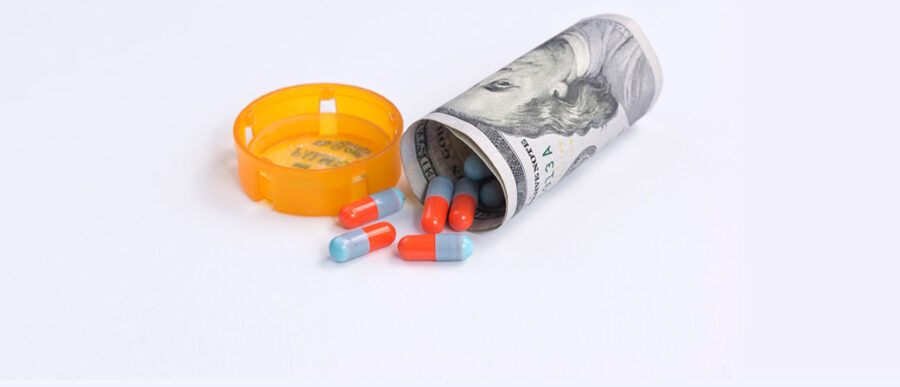President Trump’s recently announced plan to lower prescription drug prices could achieve that goal in the short run as pharmaceutical companies chip in with token reductions, but its long-run outcomes are uncertain, according to experts at Wharton and Drexel University. At the same time, lower drug prices may not always be in patients’ best interests because they could hurt R&D investments in new and better treatments, they said.
The “American Patients First” program, announced last Friday, has several moving pieces and an incremental approach that calls for changes in laws, rules and regulations. A key piece of it is to renegotiate trade contracts with foreign governments to get them to pay their “fair share,” or more than what they now pay for drugs made in the U.S. It also aims to change rules to let pharmacists guide customers to less-expensive medicines; boost over-the-counter, generic and biosimilar drugs; help Medicare programs negotiate better drug prices; and prevent drug companies from gaming the system to unfairly protect monopolies.
“You’ll see kind of the Carrier Corporation story – some drug companies will reduce the prices of some of their high priced products just to go with the program,” said Mark Pauly, Wharton professor of health care management. He was referring to Trump’s unsuccessful efforts to prevent layoffs at the company’s Indianapolis plant last year. “The long-term effects are unlikely to be very large on overall drug prices.”
Robert Field, professor of law, and health management and policy at Drexel University, agreed. “There might be a publicity bounce where some companies decide to do something for the media to say, ‘Look, we were repentant, and we’re going to change our ways,’” he said. At the same time, the route to those lower prices could be long and complex. Field noted that the Trump plan has “a lot of general ideas,” some of which would require changes in legislation and regulations.
Pauly and Field discussed the likely outcomes of Trump’s plan to lower drug prices on the Knowledge at Wharton show on SiriusXM channel 111. (Listen to the full podcast using the player at the top of this page.)
Lower drug prices may not necessarily be a good idea, according to Pauly. “Be careful what you wish for,” he said. “Drug companies of course will treat any interruption in the flow of new products as sacrosanct and sacrilege. There will be some interruption [in innovation]. It’s a question of what tradeoff we’re willing to make as consumers and as citizens, and as taxpayers.”
“Lives will be lost [if new drugs aren’t developed], but lives are also lost by overpriced drugs when people don’t have access to them.”–Mark Pauly
According to Pauly, “Pharmaceutical companies tend to invest only if they think they can make money on what is often a very uncertain new product…. If you allow them to expect greater profits if they hit the jackpot, they’re going to invest more in jackpot-hitting products.” Lower drug prices would inevitably curb investments by pharmaceutical companies to create new products, he predicted. At the same time, it’s not clear how bad an outcome that would be. “What nobody knows is, what are those new products? Would they be the blockbuster with a low chance of success that would cure Alzheimer’s or cystic fibrosis or whatever it might be? Or would it be the next me-too drug, and who the heck cares whether it shows up on the market or not?”
Field said that drug makers might overstate the impact of lower prices on their R&D investments to find new cures. “The drug companies are in the situation of the boy who cried wolf,” he noted. “They’ve been saying for decades” that any restriction would hurt innovation and their efforts to develop miracle drugs. Added Pauly: “Well, lives will be lost [if new drugs aren’t developed], but lives are also lost by overpriced drugs when people don’t have access to them.”
Preventing Foreign Freeloading
In his announcement of the plan, Trump also said he wants to prevent “foreign freeloading,” where other countries negotiate “unfairly low prices” from U.S. pharmaceutical companies. “This places the burden of financing drug development largely on American patients and taxpayers, subsidizes foreign consumers, and reduces innovation and the development of new treatments,” he said. He noted that U.S. consumers end up paying more than 70% of the profits from branded drugs among OECD countries. His plan is to get the U.S. Trade Representative to rectify unfair intellectual property and market access policies in trade agreements with foreign countries.
Compelling foreign governments to pay more for American drugs will again not necessarily mean lower prices for U.S. patients, according to Field. “If we get them to pay more, that might just be more drug company profits,” he said, noting that the pharmaceutical industry has among the highest profit margins. Pauly agreed, and said, “At least according to economic theory of monopoly pricing, if you can get the Portuguese to pay more for a drug than they are now paying, drug companies won’t turn around and charge Americans less – they’ll charge whatever is the more profit-maximizing price in the U.S.”
American consumers may be better or worse off than those in other countries, depending on whether access or affordability matters. “Every other developed country has a national health program that provides coverage to all, or essentially all, of its citizens, and every one of those programs negotiates drug prices and sets limits on what patients will have to pay,” Pauly told a caller on the show. “We’re the only one that doesn’t.” At the same time, American consumers have access to all drugs, so long as they or their insurance plans can pay for them, unlike in other countries where price bargaining could result in some drugs not being made available, he added.
Reining in PBMs
The Trump plan to tighten rules governing pharmacy benefit managers, or PBMs, would bring savings to customers, said Field. The proposals include revamping rebate programs for PBMs in their drug purchases and freeing pharmacists from the current “gag rules” that prevent them from telling patients of lower-cost alternatives to their prescription drugs.
PBMs typically do not pass on to consumers the rebates they secure from drug makers, said Field. He also noted that “the rebates are a violation of the law” if they are not disclosed and passed on to consumers. “The PBMs are accepting money in return for recommending a product or a drug, which is a kind of kickback,” he explained. Pauly pointed out that if PBMs pass on those rebates to consumers in the form of lower drug prices, they would attempt to make up those revenues in the form of higher premiums.
“The PBMs are accepting money in return for recommending a product or a drug, which is a kind of kickback.”–Robert Field
For those who have employer-sponsored health insurance, the cost of drugs may not matter because they only have to make a fixed copayment, irrespective of the prices of their prescription medicines, Field noted. However, those who have insurance plans with percentage-based co-pay requirements would have to shell out proportionately more for higher-priced treatments, he added.
Unfinished Agenda
Significantly, the Trump plan is conspicuously silent on two aspects. One, it did not directly target pharmaceutical companies, whom Trump has previously accused of “getting away with murder” with their prices. Two, it did not seek to use the government’s purchasing power in the Medicare program to negotiate lower prices from drug companies.
Pauly pointed out that the government’s use of its buying power under Medicare could prevent access to medicines that are badly needed. “The important thing to know about bargaining is that it’s economic chicken,” he said. If the buyer insists on a lower price, the seller may refuse, he explained. “The consequence of bargaining inevitably is that some products that might have been available to you under a non-bargaining setting [may not be available]. You may have a smaller menu of products available to you.”
Generic drugs may be a solution in some cases, but not with patented drugs for which generic equivalents are not available, said Field. In the case of monopoly drugs, he added there is a strong case for the government to intervene and impose price regulation.
Pauly called for changes in both the patent terms for branded prescription drugs and the “exclusivity” benefits the Food and Drug Administration grants companies by prohibiting or delaying the entry of generic, competitor drugs. Field said that although the Trump plan does not specify it, there are moves afoot within the administration to allow easier entry for generics. Incentives to develop drugs for relatively smaller patient markets is another issue the Trump plan has left unaddressed, Field said.
All said, making drugs more affordable for American citizens will address only a fraction of the larger task of reining in national health care spending. Prescription drug spending accounted for just about 10% ($329 billion) of the total national health expenditure of $3.3 trillion in 2016, according to the latest data put out by the Centers for Medicare & Medicaid services.



